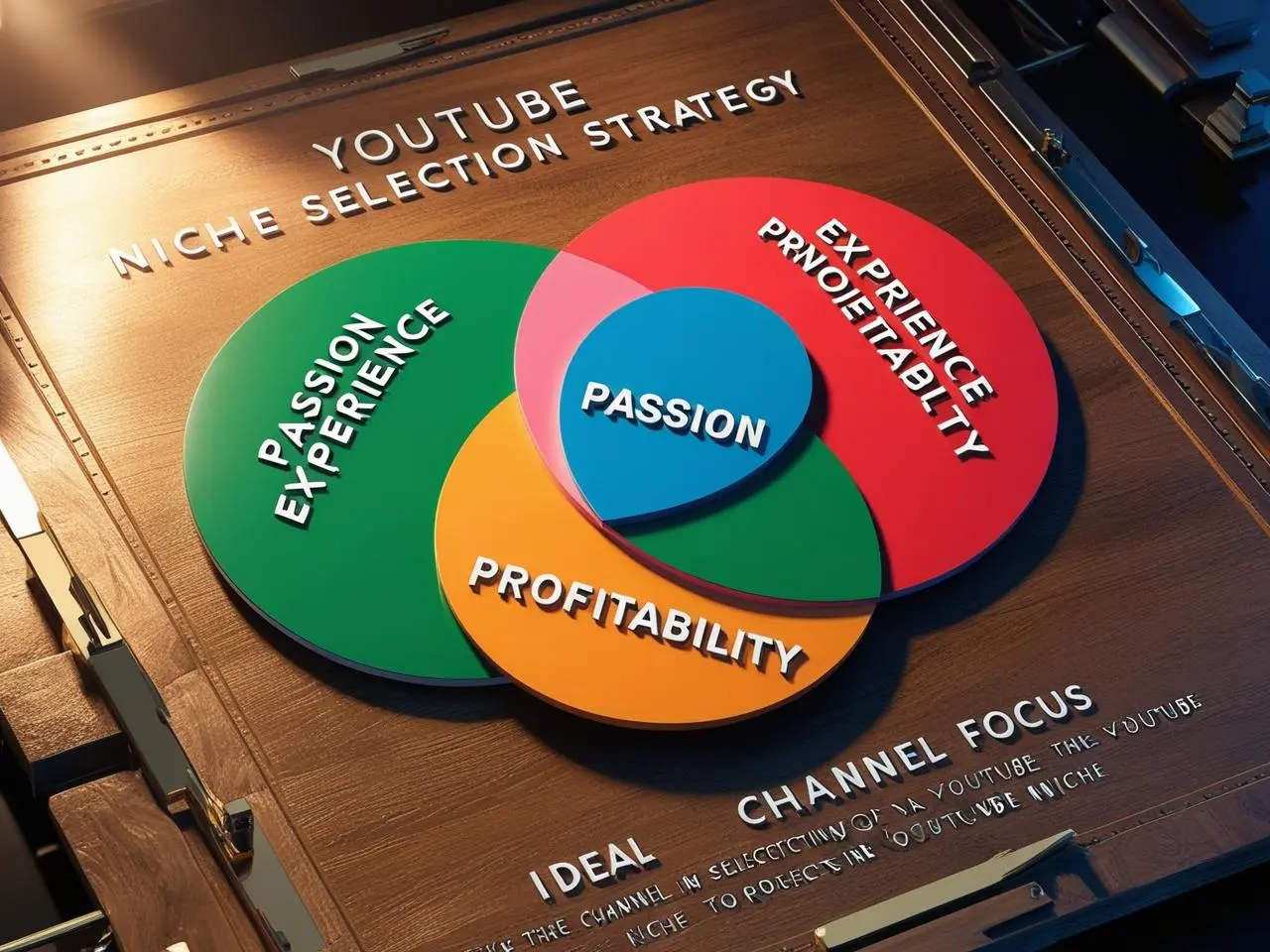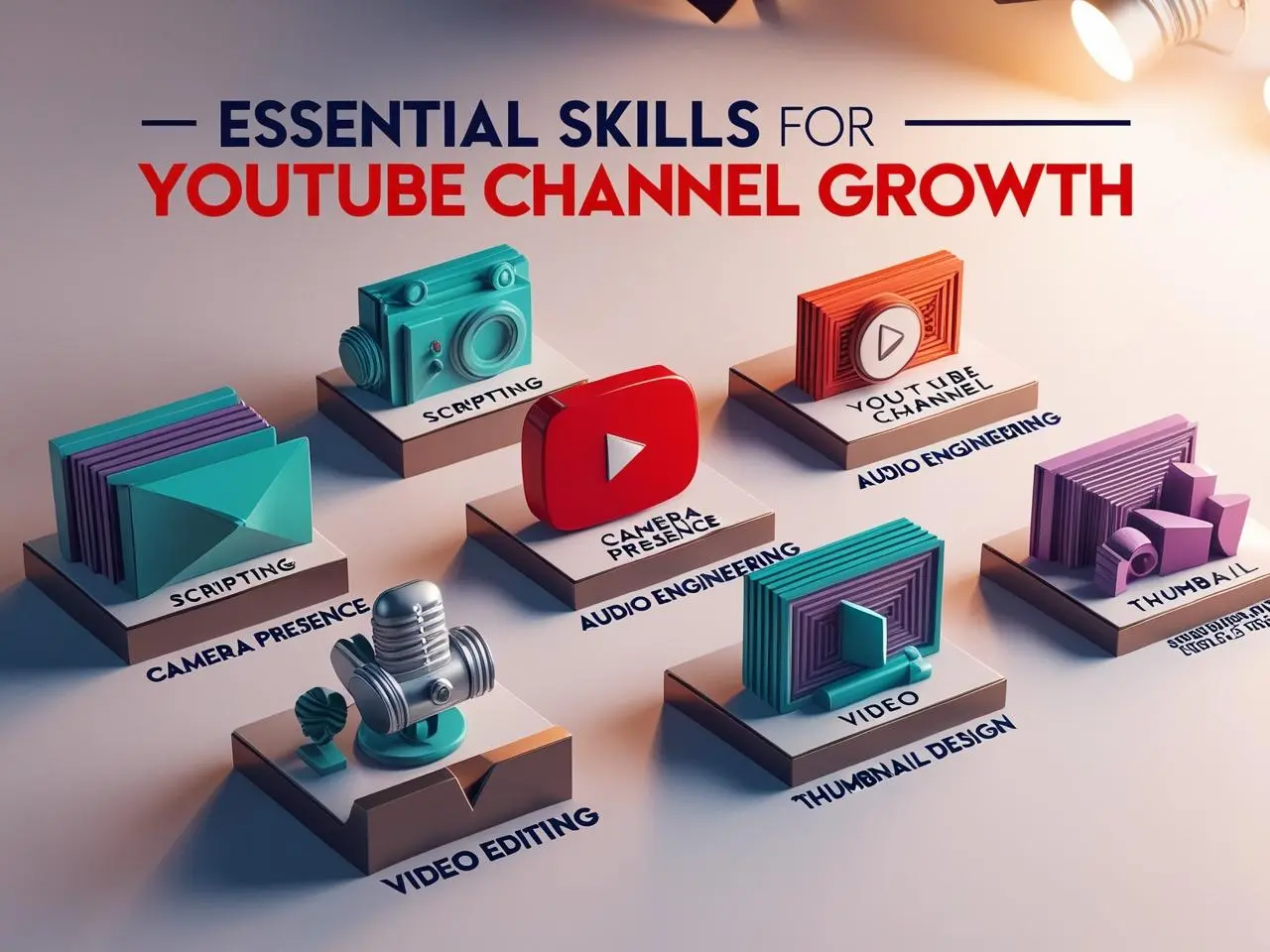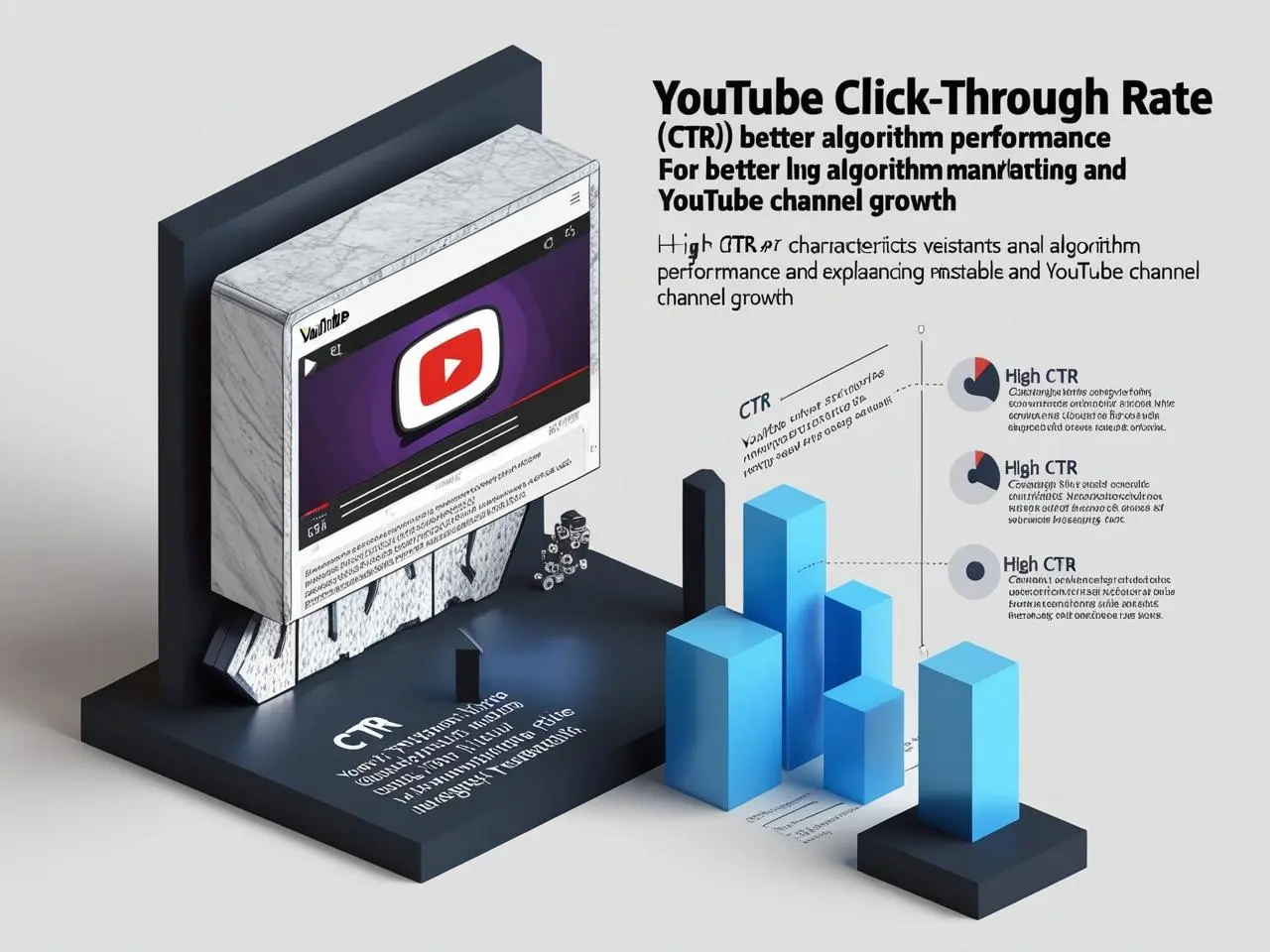Ever scrolled through YouTube, seen creators with millions of views, and thought, "Could that be me?" Maybe you've even dreamt of sharing your passion or building a community, but the path to actual YouTube channel growth feels like a confusing maze. You're not alone. Many aspiring creators start with passion and zero subscribers, wondering how to turn their vision into a thriving channel. This isn't about "quick tips and tricks" for overnight virality. Instead, I want to share a battle-tested mindset and a strategic roadmap. If you're ready to stop guessing and start building a channel that not only grows but also resonates, you're in the right place. We'll break down exactly what it takes to lay a strong foundation, develop essential skills, and navigate the YouTube landscape like a pro, drawing from real experiences of explosive growth.
What is True YouTube Channel Growth, Really?
When we talk about YouTube channel growth, it's easy to get fixated on subscriber counts and view numbers. And yes, those are important metrics! But true, sustainable growth goes deeper. It’s about building a genuine connection with an audience, consistently providing value, and mastering the craft of content creation. Think of it like building a house. You can’t just throw up walls and expect it to stand; you need a solid foundation (your niche and strategy), strong pillars (your skills and content quality), and a well-designed structure (your understanding of the platform). I remember when I started my first channel years ago; I made over 180 videos with virtually no traction. It wasn't until I understood these foundational elements that things truly clicked, leading to rapid growth on a new venture.
Why Should You Care About Strategic YouTube Growth?
"Okay, but why all the strategy?" you might ask. "Can't I just upload videos and hope for the best?" While passion is your fuel, strategy is your roadmap. Without it, you're driving blind. Strategic YouTube channel growth means:
- Reaching the Right People: You're not just getting views; you're getting views from people who genuinely care about your content and are more likely to subscribe and engage.
- Sustainable Success: Quick viral hits are exciting, but a strategic approach builds a loyal community that sticks around, leading to long-term channel health and monetization opportunities.
- Efficient Use of Your Time & Energy: Instead of throwing spaghetti at the wall to see what sticks, you're making informed decisions, focusing your efforts where they'll have the most impact.
- Building Authority and Trust: Consistent, high-quality content within a well-defined niche establishes you as an expert and a trusted voice.
Imagine Anjali, a talented home cook who randomly posted recipe videos. She got sporadic views. Then, she niched down to "Quick & Healthy Indian Meals for Busy Professionals," optimized her titles and thumbnails, and started engaging with her audience. Her channel didn't just grow; it became a go-to resource, building a dedicated community and even leading to brand collaborations. That's the power of strategic growth.
3 Pillars to Kickstart Your YouTube Channel Growth
Starting strong involves a few critical decisions and actions. Let's break down the essential pillars.
1. Decoding the 'Right' Niche: The Trifecta for Success
The first hurdle for many is choosing a niche. If you have a burning passion or hobby, fantastic – your niche is clear! But if you're looking to earn or explore different avenues, it's crucial to find a sweet spot. Don't just chase what seems profitable if you have no genuine interest. I've seen many start tech channels purely for money, only to burn out. YouTube is a marathon, not a sprint. You need to enjoy the process.

Consider these three intersecting circles:
- Passion/Interest: What topics do you genuinely love talking about or exploring? You'll need to dedicate significant time, and enjoyment makes it sustainable.
- Experience/Knowledge: In which of your interest areas do you have the most knowledge or experience? This allows you to create better, more insightful content than others and generate ideas more easily.
- Profitability/Demand: Is there an audience for this niche? Are successful creators in this space getting decent views and subscribers? Do their numbers align with your expectations?
When I launched "Decoding YT," I specifically chose the YouTube growth niche because I was passionate about it, had five years of (initially painful, then insightful) experience, and saw that top creators in this space were thriving. Find your intersection, and you've found a powerful starting point.
- Inline Visual Suggestion 1 here
2. Learn from the Best (Without Copying!): Strategic Content Consumption
Many say YouTube is saturated. While there's competition, there's always room for unique voices. My experience? In most cases, YouTube wants you to learn from what's already working. This doesn't mean copying! It means strategic imitation and differentiation.
Here's how:
- Create a New YouTube Account: Use this only to subscribe to the top 5-10 creators in your chosen niche.
- Become a Student of Their Content:
- Thumbnails: What makes you click? What style gets more views?
- Intros: How do they hook you in the first few seconds?
- Editing: Is it fast-paced or slow? What visual elements do they use?
- Video Ideas: What topics go viral? Which ones fall flat?
- Engagement: How do they interact with their audience in comments or community posts?
- Take Notes: Seriously, keep a diary. When a video grabs your attention, analyze why. If you get bored, pinpoint where you lost interest. I did this religiously in my early days.
Remember the famous quote: "Winners don't do different things; they do things differently." MrBeast reviews products like other tech YouTubers, but his added humor and unique presentation make him stand out. Find your unique selling point (USP) – your "different" – by understanding the current landscape.
3. The First 100 Videos Myth & The Power of Active Skill Development
There's a saying (even MrBeast agrees!) that your first 100 videos are often "trash." My first 180+ videos across various channels? Mostly trash, no views. Why? Because those initial videos are your training ground. They teach you:

- Scriptwriting
- Speaking to the camera
- Audio recording and editing
- Video editing
- Thumbnail design
- Storytelling
The good news? You don't have to make 100 subpar videos. You can accelerate your learning through active improvement. Many creators just upload and hope to get better naturally over time. This is slow.
Instead:
- Make a List: Identify key skills crucial for your channel's growth (see list above, add branding, storytelling, etc.).
- Focus Weekly: Decide to improve one specific aspect or learn one new skill each week.
- This week: Improve audio. Maybe buy a decent mic.
- Next week: Improve editing. Watch tutorials, try a new technique.
- Week after: Level up thumbnails. Study design, experiment.
You won't be perfect overnight, but give it your best. Screenshot this list if you need to! This planned approach can significantly boost your content quality in just 25-30 videos. Don't wait for perfection to start; start, and actively work towards perfection with each upload. At least one to two videos a week is a good rhythm. They might be "trash" initially, but the lessons will be gold.
- Inline Visual Suggestion 2 here
Which of these foundational pillars are you focusing on right now, or which one feels like your biggest hurdle? Share your thoughts in the comments below – let's learn from each other!
: Leveraging Creator Tools: Your Unfair Advantage
Starting out can feel like you're navigating a dense forest alone. But what if you had a guide, a map, and some power tools? That's where creator tools come in. While your skills are paramount, certain tools can significantly streamline your workflow and provide data-backed insights.
For instance, tools like VidIQ (which the original script speaker highly recommends from personal success) are designed specifically for YouTube creators. They often offer features like:
- AI-Powered Coaching: Imagine having a virtual coach that can analyze your channel and give you actionable advice on getting more views, tailored to your specific content. You could ask, "What can I do to get more views on my [your niche] channel?" and get concrete steps.
- Video Idea Generation: These tools can analyze trends in your niche and suggest video ideas with high view potential that you might not have thought of. Some even predict the view potential (e.g., "Very High," "Medium").
- Keyword Research: This is massive. Instead of guessing what people search for, you can find keywords with good search volume but low competition. This means even smaller channels can rank. For example, a broad term like "YouTube growth" might be too competitive for a new channel, but a related long-tail keyword like "thumbnail A/B testing low competition" could be a goldmine.
Exploring and utilizing such tools can help with brainstorming, scriptwriting, understanding analytics, and optimizing your videos for discovery. The speaker in the original script credited VidIQ for helping find high-potential ideas and keywords, leading to significant view increases. Think of them as your research assistant and strategy partner.
Cracking the Code: How the YouTube Algorithm Really Works (for Beginners)
The YouTube algorithm isn't a mythical beast; it's a system with a clear goal: keep viewers on YouTube for as long as possible by showing them videos they'll enjoy and find satisfying. If your video helps YouTube achieve this, it gets rewarded with more impressions (i.e., shown to more people).

When the algorithm decides what to recommend, it broadly follows a two-step process:
- Matching Videos to Viewer Interests: It looks at a viewer's watch history, search history, and other signals to find videos that align with their tastes.
- Rating Videos by Performance: It then ranks these matched videos based on their performance metrics. Better performing videos get more recommendations.
So, what "performance" metrics matter most for YouTube channel growth?
- Click-Through Rate (CTR): This is the percentage of people who click on your video after seeing its thumbnail and title in their feed or search results. If 100 people see it and 5 click, your CTR is 5%. If 15 click, it's 15%. Higher is generally better. There's no magic CTR number for virality; just focus on consistently improving your average CTR. This comes down to compelling thumbnails and titles.
- Watch Time (Audience Retention): How long do people actually watch your video? The more time spent, the better, as it signals to YouTube that your content is engaging and satisfying. To improve watch time:
- Strong Intro Hook: The first 30 seconds are critical. Hook viewers immediately and tell them why they should stick around.
- Deliver on Your Promise: Your content must match the expectations set by your title and thumbnail. Clickbait kills channels.
- Use Pattern Interrupts: Keep things visually interesting with cuts, graphics, text overlays, sound effects, and varied camera angles (if applicable). Don't let your video become a static monologue.
- Engagement Signals: Likes, comments, shares, and subscribers gained from a video also tell YouTube that viewers are satisfied. Encourage interaction!
Breaking the algorithm isn't about secret hacks; it's about consistently creating content that excels in these areas.
- Inline Visual Suggestion 3 here
Getting Your First Views: Strategies for New Channels with Zero Subscribers
Starting with zero subscribers can be daunting. How do you get those initial eyeballs?
- Ride the Wave of Trends & Popular Topics: Make videos on topics currently trending or highly popular within your niche. When I started "Decoding YT," my first video was on a larger, very popular creator (Elgato). People searching for him or interested in his content were then recommended my video, giving me initial views despite having no subscribers.
- Master Searchable Content: New creators often find their first consistent views through YouTube search. Use tools (like VidIQ, as mentioned, or others) to find topics people are actively searching for, especially those with good search volume but lower competition where you can rank.
- Niche Down (Initially): If you're in a broad, competitive niche (e.g., "YouTube Growth"), consider niching down further initially. For example, instead of general YouTube growth, you could focus on "YouTube Growth for Gaming Channels." This targets a smaller but more specific and potentially more engaged audience. You can become the go-to provider for that sub-niche, building a strong community.
- Strategic Sharing (Where it Makes Sense):
- General Audience Content (Vlogs, Entertainment): Share with friends and family.
- Specific Niche Content: Use platforms like Quora or Reddit. If you've made a video answering a specific question, find that question on Quora and provide a helpful, brief answer with a link to your video for more detail. I used to get significant views and subscribers this way for an older channel.
Common Mistakes to Avoid on Your YouTube Journey (We’ve All Been There!)
Embarking on your YouTube adventure is exciting, but a few common pitfalls can slow down your YouTube channel growth. Here’s what to sidestep:
- The Perfection Paralysis Trap: Many new creators want their first video to be absolutely perfect and spend weeks, even months, planning it. Mistake: If you don't upload, you can't learn, you can't improve, and your videos won't get good. Solution: Embrace imperfection initially. Get videos out, learn from each one, and iterate.
- Ignoring Niche Clarity: Starting too broad or jumping between wildly different topics confuses both your audience and the algorithm. Mistake: Viewers won't know what to expect, making it hard to build a loyal following. Solution: Define your niche clearly using the Passion-Experience-Profitability model. You can always expand later once you have a core audience.
- Chasing Virality Instead of Value: Focusing solely on "going viral" often leads to inauthentic content or chasing fleeting trends unrelated to your core niche. Mistake: Viral hits without a sustainable content strategy rarely lead to long-term growth. Solution: Prioritize providing genuine value to a specific audience. Consistent value builds a loyal community, which is far more powerful than a one-off viral spike.
- Giving Up Too Soon: The "first 100 videos are trash" idea isn't just a saying; it reflects the learning curve. Mistake: Many creators get discouraged by low views on their initial videos and quit before they’ve had a chance to develop their skills and find their voice. Solution: Commit to the process. Understand that skill development takes time and consistent effort. Track your small improvements and celebrate them.
Final Thoughts
Starting and growing a YouTube channel in 2024 is absolutely achievable, but it demands more than just hitting "upload." It requires a strategic mindset, a commitment to continuous learning, and a genuine desire to connect with and serve an audience. By carefully selecting your niche, actively developing your skills, understanding how the platform works, and strategically getting your content seen, you can move from zero subscribers to a thriving community. Remember, every successful creator started somewhere, often with "trash" videos and a lot of uncertainty. The key is to start, learn, adapt, and persevere.
Now, I’d love to hear from you: What’s the single biggest takeaway from this guide that you’ll implement for your YouTube channel growth starting today? Share your commitment in the comments below
Blog by Santu Das
Personal Finance Educator | Simplifying Money for Everyday Lives